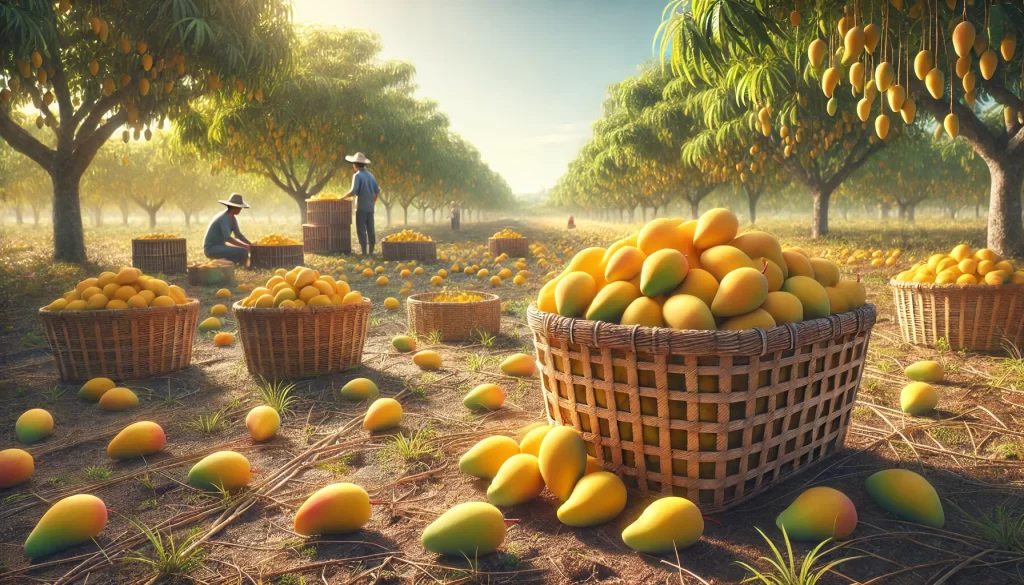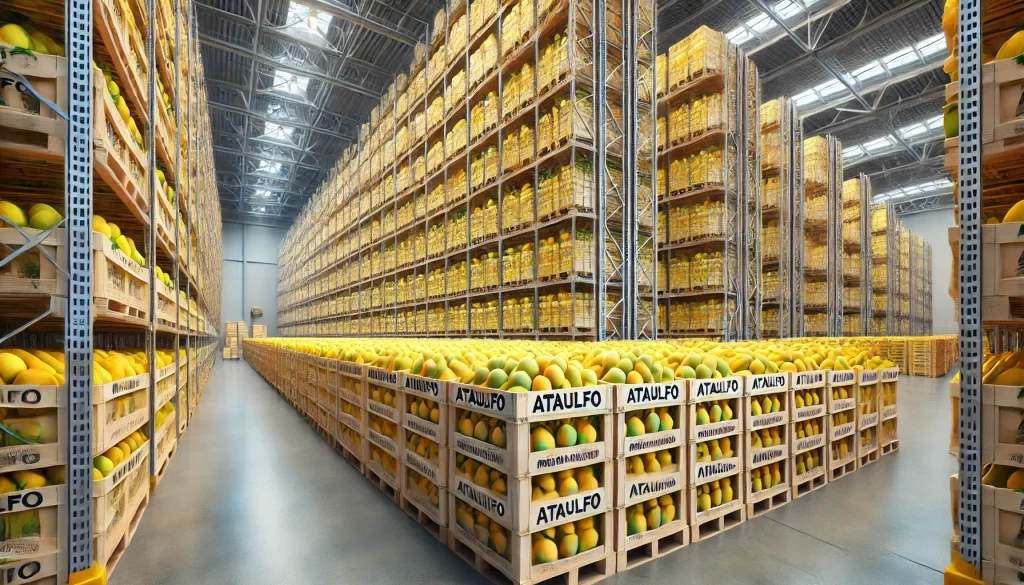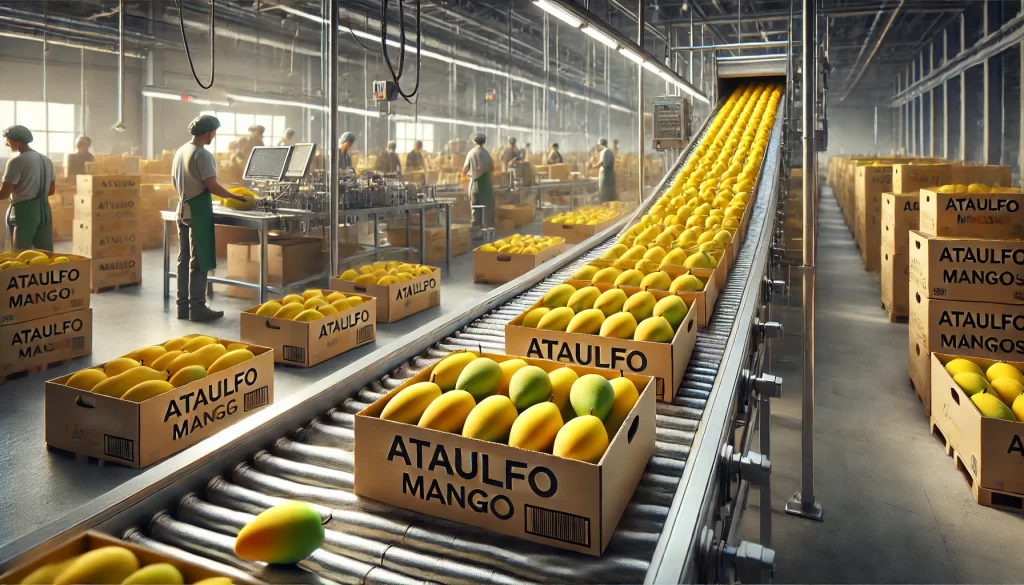How to Ensure the Quality of Ataulfo Mango After Harvest?
The Ataulfo mango is one of the most appreciated products in both domestic and international markets. To ensure that these mangoes reach consumers at their optimal point, it is essential to manage each post-harvest stage with precision. From the moment of harvest until the mangoes reach the market, every step is crucial to preserving the freshness, flavor, and quality of the fruit.

Optimal Harvest Time: When Is the Ideal Moment?
Determining the right time for harvest is crucial to ensure the quality of Ataulfo mango. The fruits should be harvested when they have reached their physiological maturity, which is reflected in several key indicators. The skin color is one of the first signs, as ripe Ataulfo mangoes display a characteristic golden yellow hue. Additionally, the firmness of the fruit is important; it should yield slightly to the touch but maintain its structure. Another determining factor is the soluble solids content, which should be in the range of 10 to 12° Brix, indicating an adequate sugar level for consumption.
Harvesting Techniques: The Art of Collecting Without Damage
The harvesting of Ataulfo mango is primarily done manually to avoid damage to the fruit. It is essential to use a knife or shears to cut the fruit, leaving a small stem that prevents wounds on the skin, which could become entry points for post-harvest diseases. Harvesting should preferably be done during the cooler hours of the day to minimize thermal stress on the fruits.

Post-Harvest Treatment: Preserving Quality Until the Market
Sorting and Selection Process: Which Mango Goes to Market?
Once harvested, Ataulfo mangoes undergo a rigorous sorting and selection process. This process ensures that only the highest quality fruits reach the final consumer. Mangoes with defects such as spots, bruises, or deformities must be removed. Selection is also based on size, color, and firmness, allowing the creation of homogeneous batches that facilitate marketing.
Washing and Disinfection: Key to Prolonging Shelf Life
Washing is a crucial step to remove any field residue, such as soil or pesticide remnants, that may remain on the surface of the fruit. After washing, disinfection is carried out to reduce microbial load and prevent the onset of diseases during storage. This process usually includes the use of approved chlorinated or fungicidal solutions, which help maintain the quality of the fruit for longer.

Ripening Treatment: How to Control the Process?
For markets that require mangoes at different stages of ripeness, treatments that accelerate or delay this process are common. Treatment with ethylene is a common practice to uniform the ripening of the fruits and ensure they reach the point of sale in ideal conditions. This treatment is carried out in controlled chambers, where the concentration of ethylene, temperature, and humidity are regulated.
Storage and Transportation: Maintaining the Freshness of Ataulfo Mango
Optimal Storage Conditions: How to Prolong Shelf Life?
Proper storage of Ataulfo mango is crucial to maintain its freshness until it reaches the consumer. Storage conditions must be carefully controlled; the ideal temperature is 12 to 15°C with a relative humidity of 85 to 90%. These conditions help slow the ripening process and reduce the incidence of post-harvest diseases. It is important to avoid temperatures below 10°C, as they can cause cold damage, manifested in the form of spots on the skin and altered texture in the pulp.

Efficient Transportation: From Field to Consumer
Transportation is a critical stage that can affect the final quality of Ataulfo mango. The fruits should be transported in refrigerated vehicles that maintain optimal temperature and humidity conditions. Additionally, it is essential that the mangoes are placed in ventilated boxes and stacked properly to avoid damage from crushing. Careful handling during loading and unloading is essential to minimize the risk of physical damage that could deteriorate the quality of the fruit during marketing.
Marketing Ataulfo Mango: Strategies for Market Success
National and International Markets: Expanding Borders
The Ataulfo mango has high demand in both domestic and international markets. In international markets, such as the United States and Europe, its sweet flavor and fiber-free texture are particularly valued. To penetrate these markets, it is essential to comply with phytosanitary and quality regulations, including certification of proper agricultural practices and post-harvest management.
Packaging and Presentation: First Impressions Matter
Packaging plays a crucial role in the marketing of Ataulfo mango. Packaging should be attractive but also functional, protecting the fruit during transport and display. The use of cardboard boxes with internal divisions that prevent contact between the fruits is recommended, minimizing the risk of damage. Additionally, labeling must meet market standards, providing clear information about the origin, variety, and storage conditions.

Marketing Strategies: Highlighting the Virtues of Ataulfo Mango
To differentiate Ataulfo mango in a competitive market, it is important to highlight its unique characteristics in marketing strategies. Promoting its nutritional benefits, exceptional flavor, and origin can attract consumers seeking high-quality products. Additionally, storytelling that connects the consumer with the history and place of origin of the Ataulfo mango can be a powerful tool to increase its perceived value.
 AgronoBlog – Agriculture Blog
AgronoBlog – Agriculture Blog 